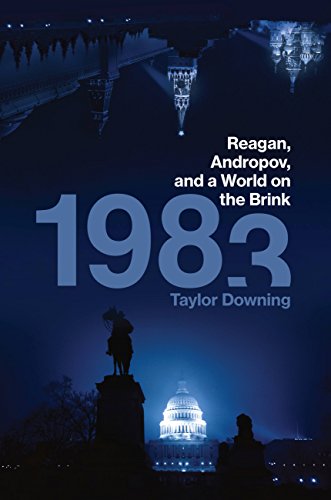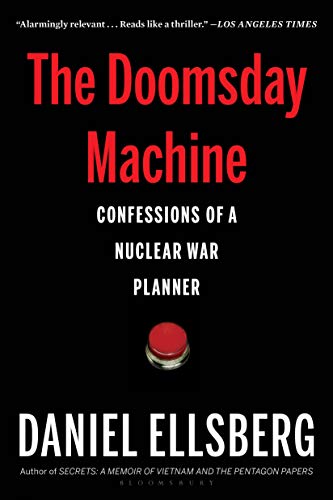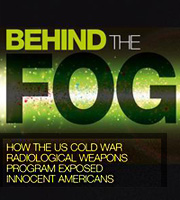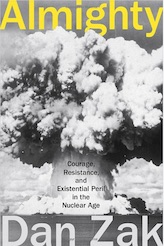Congress Introduces Legislation to Expand Compensation for Radiation Exposure
Luján, Members of Congress Introduce Legislation to Expand Compensation for Individuals Impacted by Radiation Exposure
Washington, D.C. – Today, Congressman Ben Ray Luján (D-N.M.), the U.S. House Assistant Speaker, introduced legislation to expand compensation for individuals exposed to radiation while working in and living near uranium mines or downwind from nuclear weapon test sites.
Tens of thousands of individuals, including miners, transporters, and other employees who worked directly in uranium mines, along with communities located near test sites for nuclear weapons, were exposed during the mid-1900s to dangerous radiation that has left communities struggling from cancer, birth defects, and other illnesses.
Mini-nukes: Still a horrible and dangerous idea
Mini-nukes: Still a horrible and dangerous idea
By John Mecklin, September 19, 2018
Bulletin of the Atomic Scientists
Perhaps the most dangerous weapons program the US government has recently pursued involves a low-yield nuclear warhead for submarine-launched nuclear missiles. The arguments against development of such “small nukes” are legion and overwhelmingly compelling. In fact, almost exactly one year ago, I laid out some of those arguments in an article headlined, “Mini-nukes: The attempted resurrection of a terrible idea.” And, I said then, don’t just take my word for it; read the analysis of Jim Doyle, a former longtime technical staffer at the Los Alamos National Laboratory. Simply put, the availability of “small” nuclear warheads increases the likelihood that nuclear weapons will be used, and any use of nuclear weapons easily could (some experts might say “inevitably would”) lead to general nuclear war and the end of civilization.
In the last year, however, the Trump administration released a Nuclear Posture Review calling for development of a low-yield warhead for submarine-launched ballistic missiles. Congress subsequently passed a defense authorization act that includes money for the program, and another bill allocates millions in the Energy Department budget specifically for pursuit of the new warhead.
The West’s atomic past, in opera halls
The West’s atomic past, in opera halls
On stage and in Congress, Trinity test downwinders fight for recognition.
Elena Saavedra Buckley, High Country News, Aug. 30, 2018
Outside the Santa Fe Opera, a 62-year-old venue nestled in juniper-covered hills, retirees reclined by cloth-covered tables in the parking lot. As the August heat reflected off the asphalt, they tailgated with flutes of champagne. Soon, they would file in to see Doctor Atomic, an opera about physicist J. Robert Oppenheimer and the 24 hours before the first atomic bomb, which he helped create, detonated over New Mexico’s Tularosa Basin in the Trinity test.
Doctor Atomic has been performed in New York and San Francisco, but never before in New Mexico, where Manhattan Project scientists from Los Alamos Laboratory created the bomb. John Adams composed the opera in 2005, and Peter Sellars’s libretto uses declassified Los Alamos documents, focusing on the scientists’ perspective. This was the first time that downwinders — people whose families lived in the Tularosa Basin, in the path of the bomb’s radiation — appeared on stage during a performance. This summer, 73 years after Trinity, New Mexico’s downwinders are finally receiving some attention — onstage and in Congress.
The Trinity test occurred at 5:30 a.m. on July 16, 1945, about 150 miles south of Santa Fe and the laboratory and only weeks before the bombings in Japan. It bathed the basin in light, creating a half-mile-wide crater. The Tularosa Basin Downwinders believe that blast’s radiation gave their families cancer, either from the air or through milk and produce, and that the diseases are being passed down genetically.
Trinity site cancer study expected to finish in 2019
- By Russell Contreras | Associated Press
- Updated
ALBUQUERQUE — A long-anticipated study into the cancer risks of New Mexico residents living near the site of the world’s first atomic bomb test likely will be published in 2019, the National Cancer Institute announced.
Institute spokesman Michael Levin told the Associated Press that researchers are examining data on diet and radiation exposure on residents who lived near the World War II-era Trinity test site, and scientists expect to finish the study by early next year.
Doom Towns
 A graphic novel by Andy Kirk with artist Kristian Purcell
A graphic novel by Andy Kirk with artist Kristian Purcell
“The U.S. tested nearly a thousand atomic weapons in the Nevada desert 125 miles north of Las Vegas…. Did they really build fake towns out in the desert and then blow the whole place up with atomic bombs? And the answer is yes, in fact, they did do that…
“The purpose as stated by the civil defense agencies of creating these “Doom Towns” and then widely disseminating on film their being destroyed was to encourage Americans to be concerned about the possibility of civilians being the target of nuclear attack.”
1983: Reagan, Andropov, and a World on the Brink
 Taylor Downing, Da Capo Press, 4/24/18
Taylor Downing, Da Capo Press, 4/24/18
Recently, a declassified report lifted the veil on the events of a week in November 1983, the year KAL007 was shot down and America watched “The Day After”, when we had in fact, a very close brush with World Death. The Able Archer story is a timely and important reminder of the variety of things that can happen to drive a situation to the brink of nuclear disaster when there is posturing and provocation and no trust.
Excerpts from the Christian Science Monitor book review:
“Able Archer 83 was sparked by a routine NATO military exercise. But, as writer Taylor Downing documents in “1983: Reagan, Andropov and a World on the Brink”, a carefully-researched and absorbing book, it occurred when mistrust and suspicion between the superpowers was sky-high. Indeed, relations were so tense that Soviet political and military leadership believed the exercise was a ruse to enable NATO to launch a pre-emptive strike… The Soviets concluded that this was not an exercise but the real thing and put their own military on the highest readiness level. So fully armed fighter planes sat continuously idling on runways waiting for a signal to take off. Meanwhile, in Washington, nothing seemed amiss. Only much later did the United States realize that Soviet leaders had been petrified with fear. A top-secret US report concluded, “We may have inadvertently placed our relations with the Soviet Union on a hair trigger.” (source: CSM)
More on Able Archer: Slate’s cover story from April 2017:
The Week the World Almost Ended- In 1983, the U.S. simulated a nuclear war with Russia- and narrowly avoided starting a real one. We might not be so lucky next time..
Daniel Ellsberg: The Doomsday Machine: Confessions of a Nuclear War Planner
 Ron Rosenbaum, in his fascinating and highly readable “How The End Begins” (2011) notes that when Kissinger told Nixon that Ellsberg was “the most dangerous man in America” he wasn’t referring to the Pentagon Papers but to what Ellsberg knew about top secret nuclear war plans from his work at RAND. Ellsberg had also made off with thousands of nuclear war-fighting strategy documents in addition to the Pentagon Papers, but decided to release the latter first. As it turned out much of the nuclear papers were lost during the turmoil following the Pentagon Papers release. This book, long overdue, is about what he learned then.
Ron Rosenbaum, in his fascinating and highly readable “How The End Begins” (2011) notes that when Kissinger told Nixon that Ellsberg was “the most dangerous man in America” he wasn’t referring to the Pentagon Papers but to what Ellsberg knew about top secret nuclear war plans from his work at RAND. Ellsberg had also made off with thousands of nuclear war-fighting strategy documents in addition to the Pentagon Papers, but decided to release the latter first. As it turned out much of the nuclear papers were lost during the turmoil following the Pentagon Papers release. This book, long overdue, is about what he learned then.
Ellsberg recalls being tasked to review the strategic war-fighting plans in effect under Eisenhower, and discovering that they called for “hitting every city, actually every town, above 25,000 population” in Russia and China and to some extent East Europe. Pressed for an estimate of death toll, the pentagon came back with 600 million dead. And that was not counting US and West European death tolls. “I thought, ‘This is the most evil plan that has ever existed. It’s insane.'”
Referring to US and Russian ICBM forces still to this day on alert: “Here is what we now know: the United States and Russia each have an actual Doomsday Machine.”
Democracy Now interview with transcript
Harper’s Magazine excerpt, Dec 6, 2017
The U.S. Sprayed, Injected and Fed Radiation to Countless Innocents in Secret Cold War-Era Testing
 Military scientists exposed American civilians to radiation without their knowledge or consent. “Behind the Fog” documents a dark chapter of “large-scale organizational deviance”…
Military scientists exposed American civilians to radiation without their knowledge or consent. “Behind the Fog” documents a dark chapter of “large-scale organizational deviance”…
From the publisher:
“Martino-Taylor documents the coordinated efforts of a small group of military scientists who advanced a four-pronged secret program of human-subject radiation studies that targeted unsuspecting Americans for Cold War military purposes… Agency and academic partnerships advanced, supported, and concealed the studies from the public at large who ultimately served as unwitting test subjects.
‘They targeted the most vulnerable in society… They targeted children. They targeted pregnant women in Nashville. People who were ill in hospitals. They targeted wards of the state. And they targeted minority populations.’
Martino-Taylor’s comprehensive research illuminates a dark chapter of government secrecy, the military-industrial-academic complex, and large-scale organizational deviance in American history. In its critical approach, Behind the Fog effectively examines the mechanisms that allow large-scale elite deviance to take place in modern society.”
Raven Rock: The Story of the U.S. Government’s Secret Plan to Save Itself – While the Rest of Us Die.
“Raven Rock is this massive, hollowed-out mountain. It’s a free-standing city… with individual buildings, three-story buildings, built inside of this mountain. It has everything that a small city would- there’s a fire department there, there’s a police department, medical facilities, dining halls. The dining facility serves four meals a day, it’s a 24 hour facility, and it was sort of mothballed to a certain extent during the 1990s as the Cold War ended and then was restarted in a hurry after Sept. 11 and has been pretty dramatically expanded over the last 15 years, and today could hold as many as 5,000 people in the event of an emergency.”
Almighty
 Courage, Resistance, and Existential Peril in the Nuclear Age
Courage, Resistance, and Existential Peril in the Nuclear Age
By Dan Zak, reviewed by Kai Bird
“Zak’s narrative is a perfectly measured blend of biography, suspense and history. He skillfully uses the small, finite story of the Y-12 protest [the break-in 4 years ago by Sister Rice and friends] to explore our national identity as a people whose culture is now intimately connected with things nuclear. Our bomb culture has not come cheap; the environmental costs have been devastating for many communities. And even though scores of governments- but not our own- are on record supporting a treaty that would ban nuclear weapons, Zak shows this is still an outlier dream. He quotes a United States admiral intoning: ‘I don’t see us being nuclear-free in my lifetime. Or in yours.’
We are stuck with Armageddon in our dreams. And in the meantime the Sister Megans of our bomb culture will no doubt try again and again to cry out against our complacency. But truly, it seems hopeless. As Billy Pilgrim laments repeatedly in Kurt Vonnegut’s ‘Slaughterhouse-Five’, ‘So it goes.'”
Interview with Dan Zak, “Almighty” author
A Texas public radio interview with the very knowledgable and thoughtful Dan Zak, author of “Almighty”. Dan discusses The Lieu-Markey bills to restrict presidential authority to launch nuclear war, the B61-12 nuclear bomb and its new capabilities, the planned trillion-dollar “modernization” of the US nuclear arsenal, North Korea, deterrence, and the Oak Ridge Y-12 break-in of 2012.
Resources
History Archives and Resources
Nuclear Files
Nuclear Age Peace Foundation
Nuclear Vault
Nat’l Security Archive, George Washington University, Nuclear Documentation Project
Atomic Heritage Foundation
Extensive historical documentation
Restricted Data
A blog about nuclear secrecy, past and present, run by Alex Wellerstein, a historian of science at the Stevens Institute of Technology.
Archive of Nuclear Data
From the NRDC Nuclear Program
Wilson Center Digital Archive International History Declassified: Nuclear History
See the featured collections
Bulletin of the Atomic Scientists: Digitized archives
Atomic Archive
Atomic Archive Photo Collection
Poisoned Waters and Poisoned Places
In 2001, ANA activists worked closely with Peter Eisler, an investigative reporter then at USA Today (now at Reuters), to produce this huge series of reports about the breadth of contamination and health risks from the U.S. nuclear weapons venture.
Quotes
“I know not with what weapons World War III will be fought, but World War IV will be fought with sticks and stones.”
-Albert Einstein
“The release of atomic power has changed everything except our way of thinking … the solution to this problem lies in the heart of mankind. If only I had known, I should have become a watchmaker.”
-Albert Einstein
